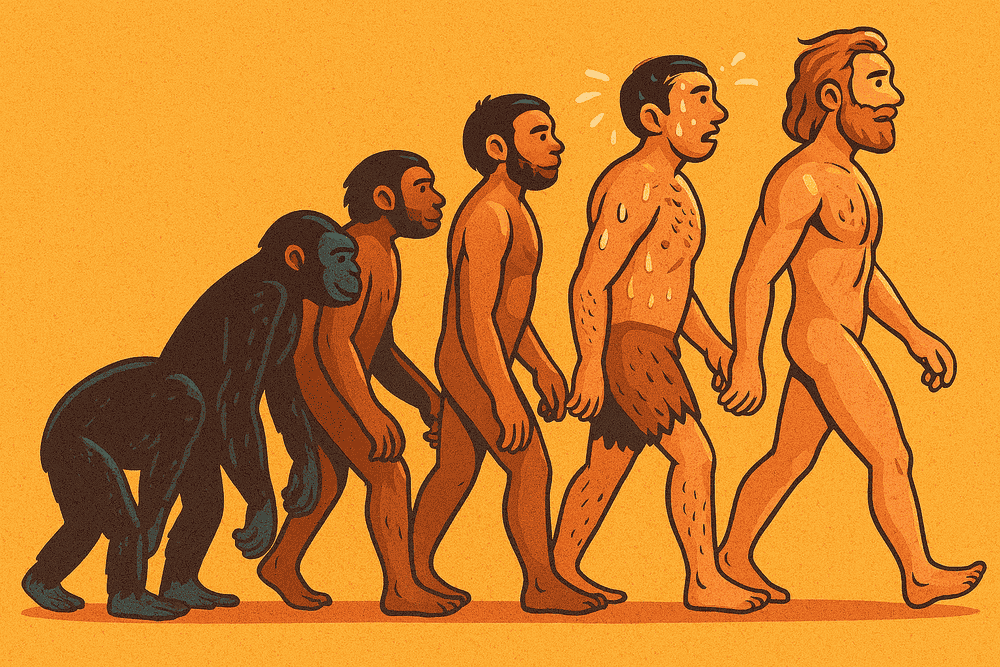Humans are the only mammals essentially “naked” in appearance—and scientists believe it’s largely because of our brain’s need to stay cool.
The ability to regulate body temperature through sweating was one of the most important physiological developments that allowed early humans to walk upright and develop larger brains. But cooling down such a powerful organ came at an evolutionary cost: body hair.
The Sweaty Path to Evolution
According to Dr. Nina Jablonski, professor of anthropology at Pennsylvania State University, the key to hair loss lies in how early humans evolved to survive under the intense African sun.
“The need to cool the brain is what drove humans to lose their body hair more than a million years ago,” Jablonski explains.

Unlike most mammals, human skin is packed with eccrine sweat glands, which allow us to release sweat directly onto the skin. When that sweat evaporates, it removes heat from the body. But thick fur would block that process, making it harder to cool down—especially during activities like long-distance running or walking under the sun.
From Hairy to Hairless — And Then to Dark Skin
As our ancestors moved more and more, especially in the heat of East Africa, they faced a new problem: overheating. Studies of early human fossils like the Turkana Boy, who lived over a million years ago, suggest that high physical activity demanded a way to stay cool. Hairless skin paired with a high density of sweat glands became the evolutionary solution.
However, bare skin also meant more exposure to sunlight and the sun’s ultraviolet radiation. This vulnerability likely led to another adaptation: dark skin—rich in melanin—to protect against UV damage and skin cancer.
It wasn’t until much later, about 70,000 years ago, when early humans migrated to northern parts of Europe and Asia, that lighter skin tones evolved. These changes allowed humans in low-UV environments to produce enough vitamin D from sunlight.




